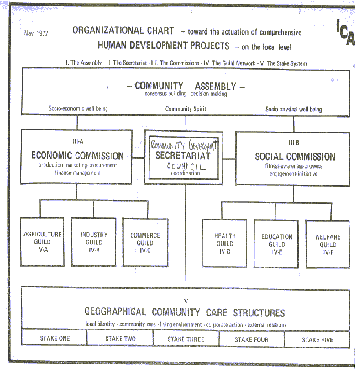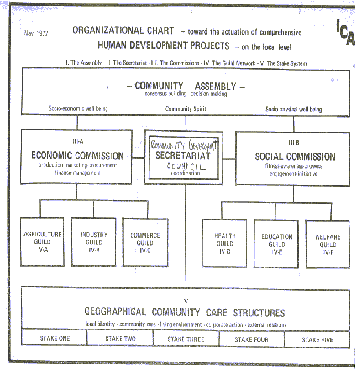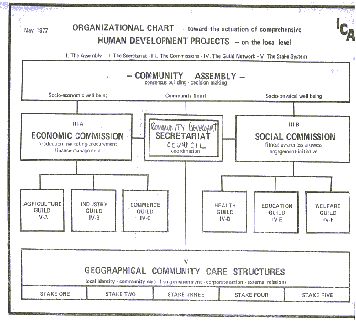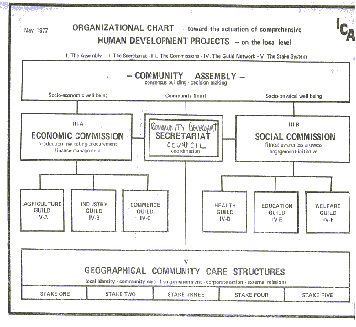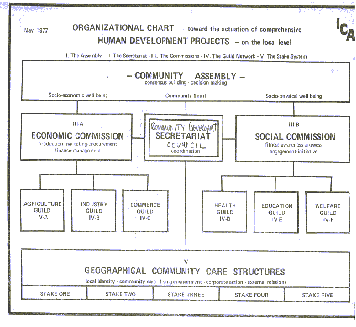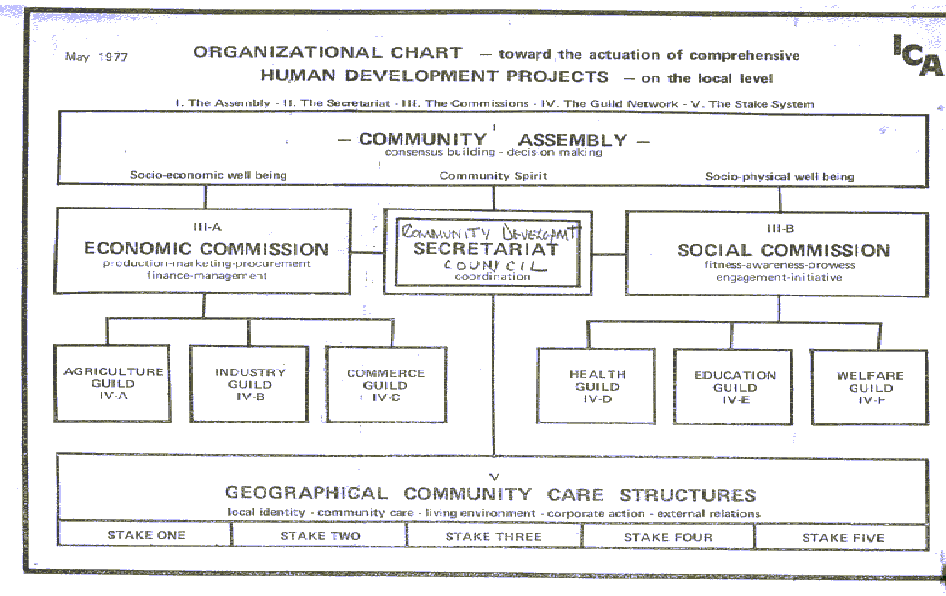FUNCTION
OPERATING DO'S
COMPOSITION
INITIATION
|
The Guilds are the community structures through which people with common work arenas plan and implement the programs for the economic and social development of the community. They provide the vehicle by which individuals can combine their resources to most effectively engage in ongoing regional and national structures.
The Guilds achieve these aims by:
identifying, bringing together and giving structure to way to operate in specific arenas
training in specific basic skills
celebrating their achievements
timelining and implementing tactics
-releasing power through corporate action
-providing form and structure to the community's work forces
-meeting to plan tactical actuation
All who work in one of the six community arenas of concern:
-Agriculture - food growing, money crops, agrobusiness
Industry - cottage industry, processing, ancillary production
-Commerce - merchandising, marketing, financial management
Health - sanitation, nutrition, immunization, curative services
Education - early education, special skills, adult training, special ed
Welfare - people, space, services
Guilds begin as task forces around one or more subjects. Early contexting as to the total Guild responsibility is helpful. For instance, the Education Guild begins with the starting of the Preschool, and then expands to assume fuller responsibility for all educational subtactics in the project.
|
